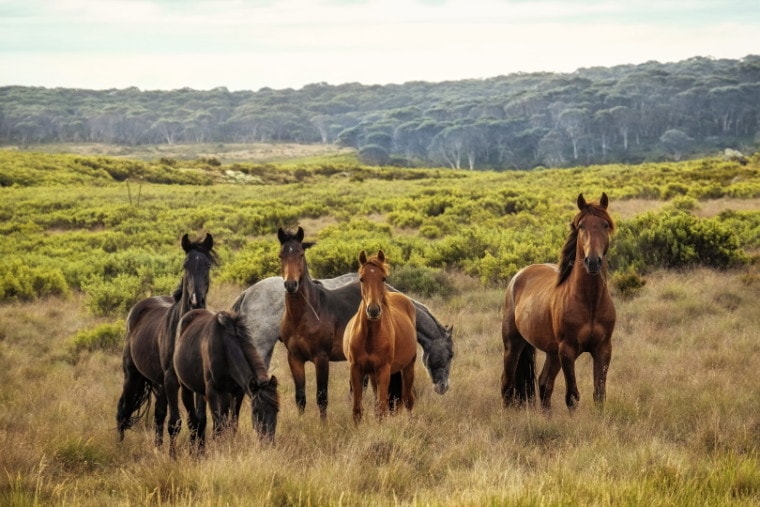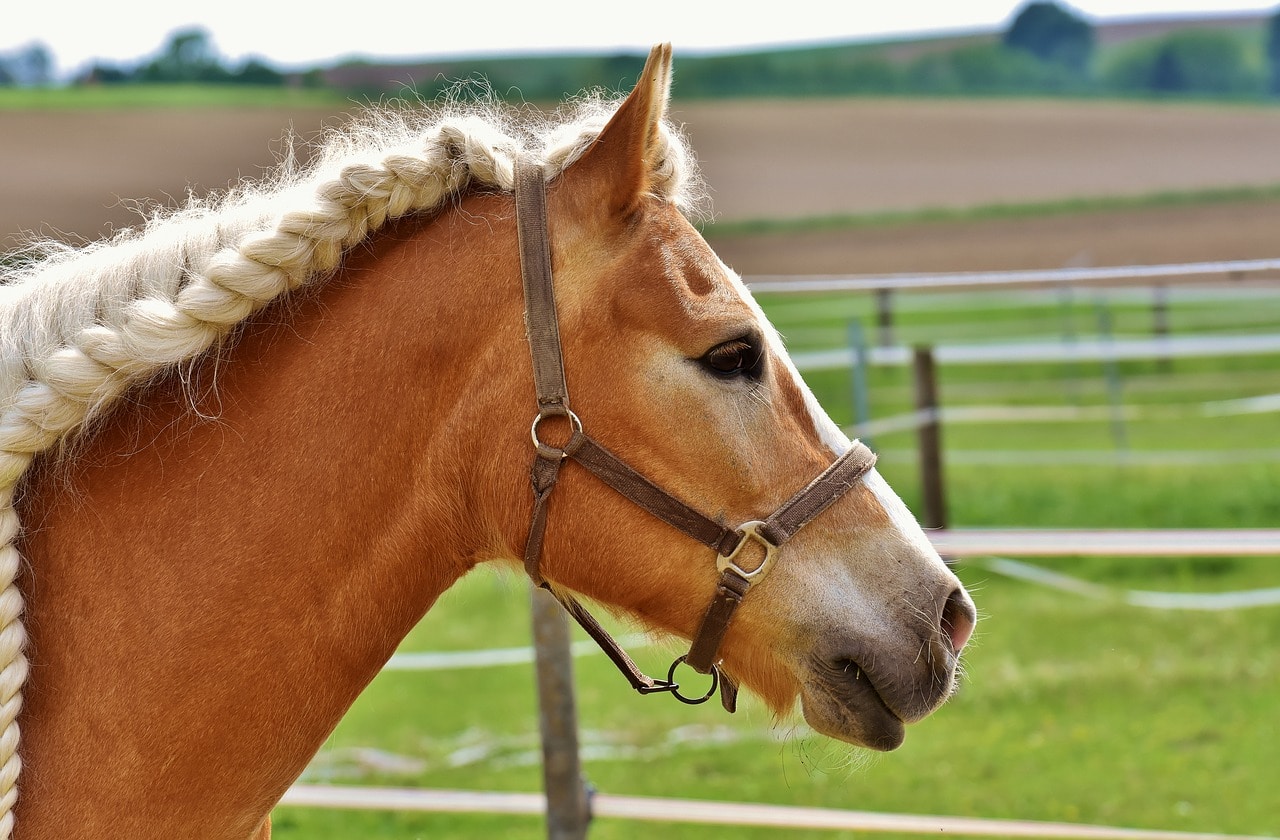
Anyone who spends time with their animals eventually starts to wonder if they see things the way that we do. Myths about horse vision are everywhere: Horses with blue eyes have more vision problems. Horses drink better out of blue buckets. Horses don’t like the color red. Horses are color blind. Puddles look like black holes to your horse. Horses see a fence with colored tape better than one without. Horses don’t remember what they see on one side of their body when they see it on the other.
These common statements about horse vision are all myths. Horses do see color, they aren’t colorblind, and they do remember what they see from one side of their body to the other. They do see blue better than red, but it’s probably luck if your horse drinks better out of a blue bucket because many horses drink out of red buckets too. Puddles might appear to be holes, but that’s a product of depth perception, not color vision. Blue-eyed horses don’t have more vision problems; their eyes are just more sensitive to light.
Let’s look at how a horse’s vision works and separate the facts from the fiction.
A Horse’s Color Vision
Within the retina, cone cells are responsible for detecting color. Humans have three different types of cones that detect red, yellow-green, and blue light. This is referred to as tri-chromatic vision and gives us the ability to see color in three different primary basic colors that when mixed together, form the great variety of colors we can perceive.
Horses, in contrast, have only two types of cones in their retina: yellow-green and blue. They have dichromatic vision. Horses see color perfectly fine, but their color palette is less diverse than ours. So, what colors do horses see?
Essentially, horses don’t see red or sub-shades of red, like pink or orange. They see the world in various shades of blue, yellow, and green. Interestingly, this doesn’t mean they see red objects as gray. They just see the colors a bit differently: Bright oranges look yellow and pinks look green.

Visual Field
The visual field of a horse is much greater than that of a human. Horses have lateral eye placement, meaning they have one eye on each side of their head. They have an almost spherical visual field when they hold their head level. They can see almost 360 degrees around their body.
The placement of a horse’s eyes also gives them a 55- to 65-degree overlap from one eye to the other. This is particularly advantageous for prey animals, as it enables them to detect predators on all sides of their bodies. The only blind spots that horses have are directly in front of their nose and behind their tail, but it only takes a tiny head shift to see these spots.
Monocular Vision
Humans have binocular vision. This means our brains process information from both of our eyes at the same time. We can see both sides of our body at once, and our field of view is determined by both eyes.
Horses can see out of one eye at a time. This is called monocular vision, which is a flat type of vision used to identify movement in the distance but that lacks the ability to see in three dimensions. There’s a common belief in the horse world that horses are unable to recognize objects with one eye that they have only seen with the other eye. It’s why many people show horses new spaces from both sides, so they don’t see something with the other eye and spook. Horses can also see in front with both eyes (called binocular vision), which gives three-dimensional vision with depth perception.
Recent research has shown that horses do perform interocular transfer. Their brain is connected between both hemispheres, just like every other placental mammal. Therefore, they can transfer information from one side of their brain to the other and recognize things that they have only seen with one eye.
It’s actually the brain that “sees,” not the eyes. Monocular vision simply means the horse’s brain only gets input from one eye at a time. The brain remembers it regardless of which side it was on.

Black Holes and Depth Perception
Many owners have seen a horse that goes galloping full speed across the pasture, only to come to a screeching (and sometimes dramatic) halt at a tiny puddle from last night’s rain shower. Some believe that this is because horses don’t have good depth perception. But is it logical that an animal that can jump fences to soaring heights, step over logs on trails, or even gallop over uneven ground doesn’t have depth perception?
The belief that horses don’t possess this ability is a myth. Horses have a substantial field of view and depth perception. Studies show that horses not only have depth perception but also experience the same types of visual illusions that humans do. Despite having lateral eyes, they have stereoscopic vision. So, what’s up with the puddles?
Horses are instinctively reactive to changes in ground color, changes in terrain, or flying objects. A bird that just came flying out of nowhere will make your horse jump, not because they’re scared of birds, but because they’re surprised. Your horse’s response to the random puddle in the pasture is likely: “I wasn’t expecting that; I don’t know what it is; I’m not running through it until I’m certain it’s safe.” Some horses react less than others, but they all do it to a certain extent. It isn’t because the puddle looks like a black hole.
Summary
The visual world of a horse is quite different from ours. It’s a little less colorful, but horses aren’t colorblind. In many senses, horses have a much bigger and broader view of the world than we do. They have good depth perception, transfer information between eyes, and can see in almost a full circle around their body. Knowing how your horse sees the world can improve how you interact and handle them.
Featured Image Credit: Piqsels








